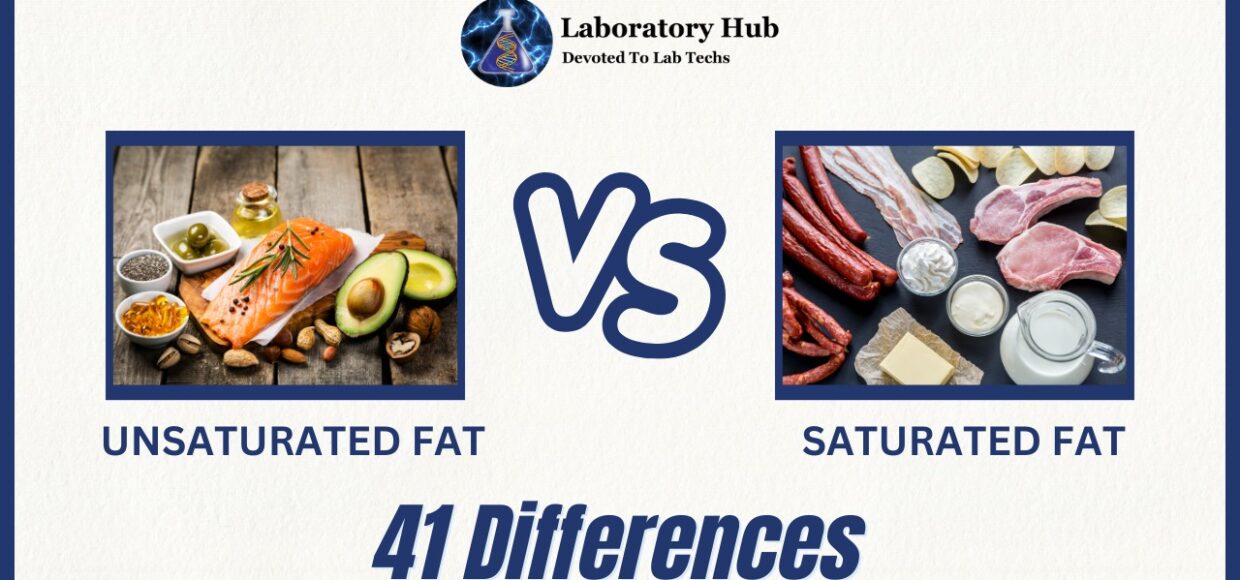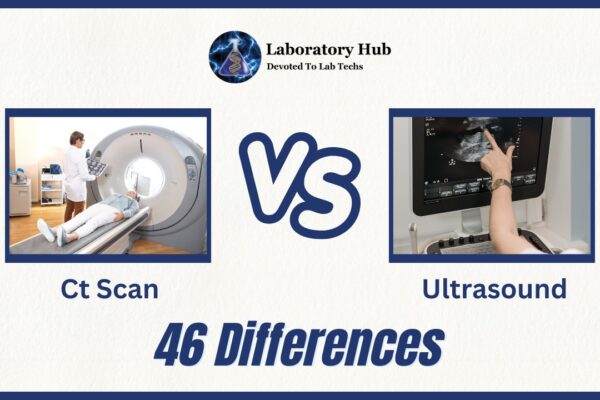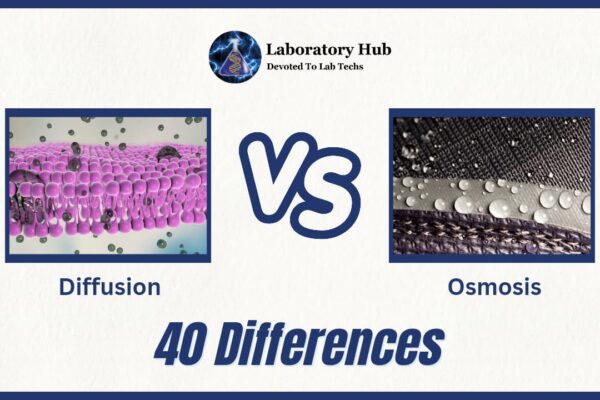41 Differences Unsaturated and Saturated Fat
Unsaturated and saturated fats are two types of dietary lipids with distinct health effects. They have diverse chemical structures and physiological consequences.
UNSATURATED FAT
Unsaturated fat is a form of dietary fat in which the fatty acid chain has at least one double bond. This double bond bends the chain and prevents the molecules from fitting closely together. As a result, at room temperature, unsaturated fats are normally liquid. They are frequently referred to as “healthy fats” because, when ingested in moderation, they provide a variety of health benefits.
Monounsaturated fats and polyunsaturated fats are the two forms of unsaturated fats.
Monounsaturated fats are considered heart-healthy and can help lower LDL (“bad”) cholesterol while maintaining or boosting HDL (“good”) cholesterol levels. They are also anti-inflammatory and can help with general cardiovascular health.
The fatty acid chains of polyunsaturated fats include many double bonds. These fats have anti-inflammatory effects and provide a variety of health benefits, Important for cardiovascular health, brain function, and the prevention of chronic diseases.
SATURATED FAT
Saturated fat is a form of dietary fat that is made up of fatty acids that have no double bonds between their carbon atoms. Because of the lack of double bonds, the carbon chain is straight and saturated, allowing the molecules to pack tightly together. As a result, at room temperature, saturated fats are normally solid. They can be found in animal-based foods such as meat, dairy, and poultry, as well as some plant-based sources such as coconut oil and palm oil.
Saturated fats have been linked to higher LDL (low-density lipoprotein) cholesterol levels in the blood, also known as “bad” cholesterol. High LDL cholesterol levels are a risk factor for cardiovascular illnesses such as heart disease and stroke. As a result, it is typically recommended that saturated fats be limited in the diet in Favour of healthier fats such as unsaturated fats from sources such as nuts, seeds, and vegetable oils.
Also Read: Innate Immunity vs Adaptive Immunity- 35 Differences
S.No. | Aspect | Unsaturated Fats | Saturated Fats |
1 | Chemical Structure | Have one or more double bonds between carbon atoms | No double bonds between carbon atoms |
2 | State at Room Temperature | Generally liquid | Generally solid |
3 | Source | Plant-based sources, fatty fish | Animal-based sources, dairy, meat |
4 | Examples | Olive oil, avocados, nuts, seeds | Butter, lard, fatty cuts of meat, cheese |
5 | Health Impact | Often considered heart-healthy | Can contribute to cardiovascular issues |
6 | Cholesterol Level | Can help lower LDL cholesterol | May increase LDL cholesterol |
7 | Heart Health | Can reduce risk of heart disease | Can increase risk of heart disease |
8 | Atherosclerosis Risk | Associated with lower risk of atherosclerosis | Linked to higher risk of atherosclerosis |
9 | Trans Fat Content | Generally low or absent | Absent in natural form, can be formed during processing |
10 | Antioxidants Presence | Often contain antioxidants | Generally lack antioxidants |
11 | Double Bonds | Have at least one double bond | No double bonds |
12 | Energy Density | Provide 9 calories per gram | Provide 9 calories per gram |
13 | Role in Diet | Should be part of a balanced diet | Should be consumed in moderation |
14 | Omega Fatty Acids Content | Rich in omega-3 and omega-6 fatty acids | Generally lower in omega-3 and omega-6 |
15 | Lipoprotein Impact | Often raise HDL cholesterol levels | Tend to raise LDL cholesterol levels |
16 | Food Choices | Encourage choosing healthier fats | Often found in processed and fried foods |
17 | Inflammation | May have anti-inflammatory properties | May contribute to inflammation |
18 | Lipid Profiles | Can improve lipid profiles | Can negatively impact lipid profiles |
19 | Unsaturated Bond Configuration | Monounsaturated (one double bond) or polyunsaturated (multiple double bonds) | No double bonds |
20 | Dietary Recommendation | Recommended in moderation | Limit intake for overall health |
21 | Risk of Chronic Diseases | May reduce risk of chronic diseases | May increase risk of chronic diseases |
22 | Role in Brain Health | Omega-3s may support brain health | No specific benefits for brain health |
23 | Oxidation Susceptibility | More susceptible to oxidation | Less susceptible to oxidation |
24 | Calories from Fat | Can contribute to total daily calories | Can contribute to total daily calories |
25 | Cooking Stability | Can be less stable for high-heat cooking | More stable for high-heat cooking |
26 | LDL Cholesterol | Often associated with lower LDL levels | Tends to raise LDL cholesterol levels |
27 | HDL Cholesterol | Often associated with higher HDL levels | No direct impact on HDL cholesterol levels |
28 | Food Labels | Listed under “total fat” on food labels | Listed under “total fat” on food labels |
29 | Saturation Level | Less saturated, more fluid | Fully saturated, solid at room temperature |
30 | Role in Cellular Structure | May maintain cell membrane fluidity | Less influence on cell membrane fluidity |
31 | Stability at High Temperatures | Less stable at high temperatures | More stable at high temperatures |
32 | Lipid Peroxidation | More prone to lipid peroxidation | Less prone to lipid peroxidation |
33 | Pancreatic Function | Can improve insulin sensitivity | May impair insulin sensitivity |
34 | Heart Attack and Stroke Risk | Associated with reduced risk | Associated with increased risk |
35 | Dietary Impact | Should be included in a balanced diet | Should be limited for better health |
36 | Cooking Oils | Often used in cooking and salads | Used in cooking, baking, and frying |
37 | Cardiovascular Health | Can support cardiovascular health | Can negatively impact cardiovascular health |
38 | Satiety | May promote feelings of fullness | May have less impact on satiety |
39 | Ketogenic Diet | Allowed in moderate amounts in some versions | Limited due to impact on ketosis |
40 | Dietary Fiber Content | Often found in fiber-rich foods | Generally not high in dietary fiber |
41 | Food Processing | Less likely to be found in heavily processed foods | Common in processed and fried foods |
Also Read: B Cells vs T Cells- Definition and 25 Key Differences
Frequently Asked Questions (FAQs)
Yes, unsaturated fats are regarded as healthier than saturated fats. When ingested in place of saturated and trans fats, they can improve heart health by lowering LDL cholesterol levels (the “bad” cholesterol). Unsaturated fats also supply vital fatty acids, which our bodies require for a variety of tasks.
Consuming too many saturated fats can raise LDL cholesterol levels, which is linked to an increased risk of heart disease and stroke. It is advised to minimise your intake of saturated fat and replace it with healthier fats such as unsaturated fats.
While excessive saturated fat consumption can be damaging to heart health, not all saturated fats are equally dangerous. Some saturated fat-containing meals also contain additional helpful elements. Coconut oil, for example, includes a form of saturated fat known as lauric acid, which has special qualities. However, moderation is essential.
You can cut your saturated fat consumption by doing the following:
Choosing lean meats and poultry.
Choose low-fat or fat-free dairy products.
Instead of butter or lard, use healthier cooking oils like olive oil or canola oil.
Increase your intake of seafood, nuts, seeds, and plant-based protein sources.
Reading nutrition labels to determine the amount of saturated fat in packaged foods.
Trans fats are a sort of artificial fat that is produced through a process known as hydrogenation. They are found in many processed and fried foods and are just as bad for your health as saturated fats. Trans fats enhance LDL cholesterol levels while decreasing HDL cholesterol (the “good” cholesterol), raising the risk of heart disease considerably.







